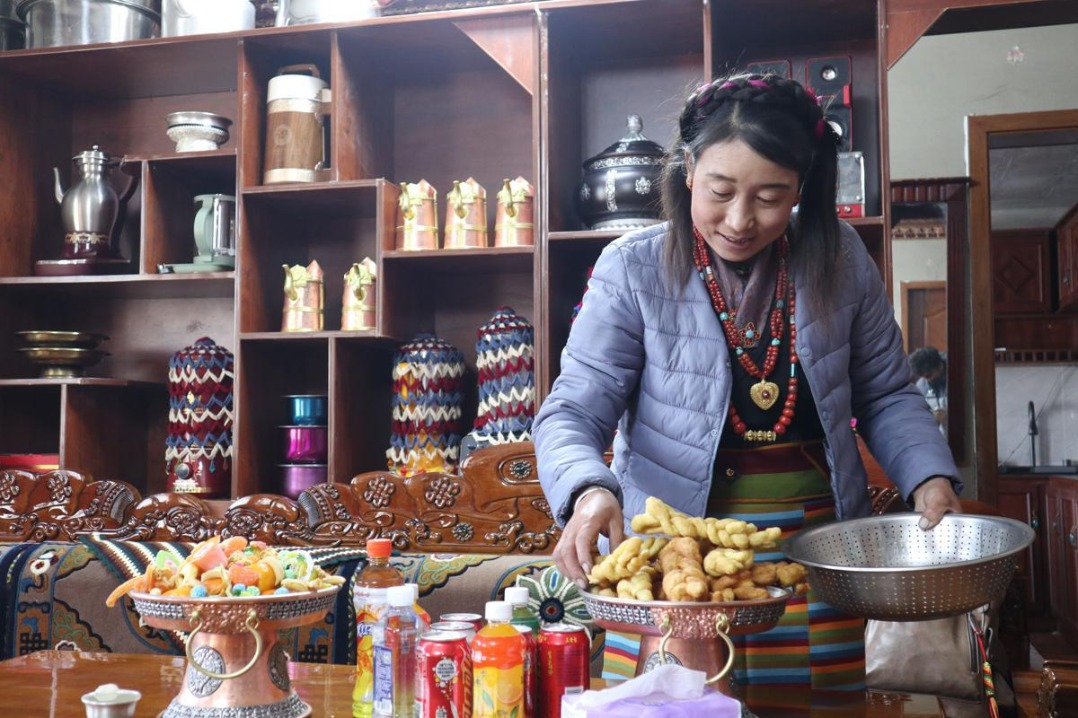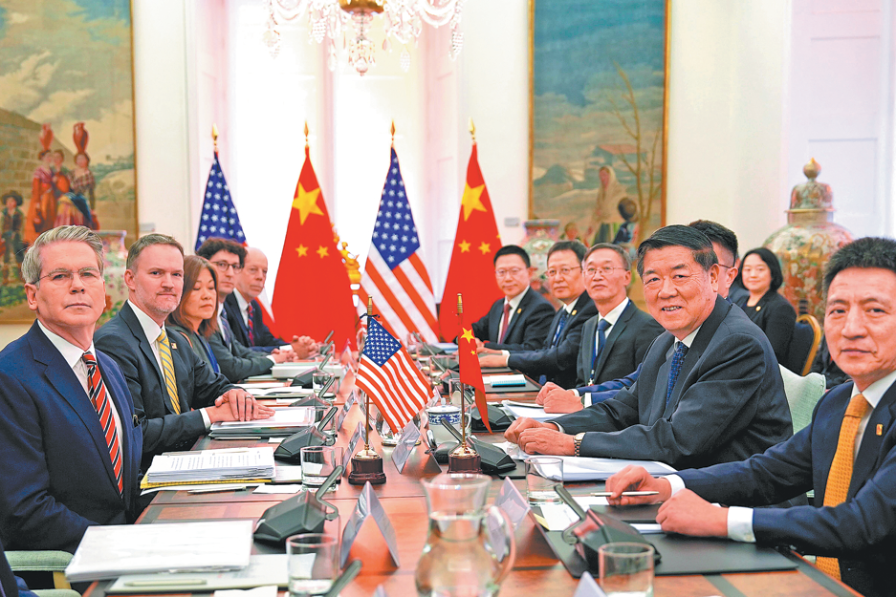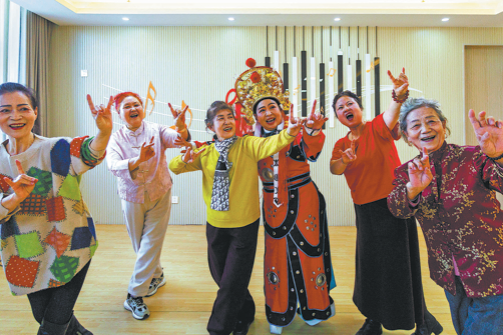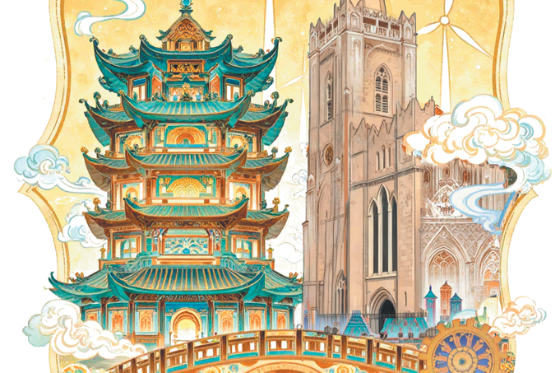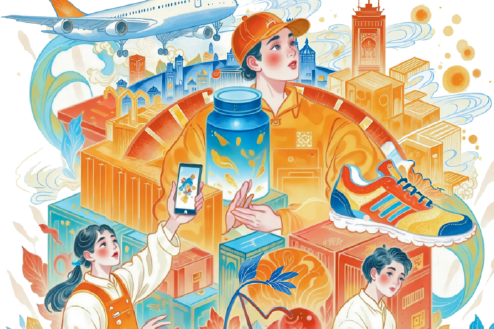China's modernization through the lens of my story


"To realize modernization by the year 2000, with telephones available upstairs and downstairs." These were the first lines that caught my eyes when I opened my primary school textbook. I guess that was the Chinese dream of modernization.
However, the reality is we could barely feed ourselves when I was small as our family was large. My mother was the eldest among the nine daughters in her family, so unlike other girls who would leave the family to live with their husbands, she had the groom move into her family instead. This meant she had to support her eight younger sisters while taking care of her own five children. And there was more - my elder step-brother brought by my father in his previous marriage.
In those years, people would greet each other by asking "Have you eaten yet". I barely had any energy to answer such greetings as I was starving.
My childhood dream was to have a hot meal, and only on my birthday could I have an egg cooked for me in the same pot in which food for pigs was cooked. I looked forward to the Chinese New Year, when I could have some meat.
I remember there was a time when visiting our relatives during the Chinese New Year, I was served a bowl of hot noodles with a chicken leg on top, and that would be a delicious meal that I had longed for throughout the whole year! So I buried my head in the bowl and ate it quickly, but when I looked up, I saw the look on my relative's face. It turned out that the chicken leg was just for show and you were expected to keep it for the next guest. There would be other visitors coming, and there's only one chicken leg in their family!
Since childhood, I always envied the fact that people in the city had food to eat without having to farm, while those of us who farmed had to eat sweet potatoes. But as my parents were both barefoot teachers, my family still had some food stamps, and I occasionally offered my neighbors rice in exchange for sweet potatoes, so that they could help me cut firewood.
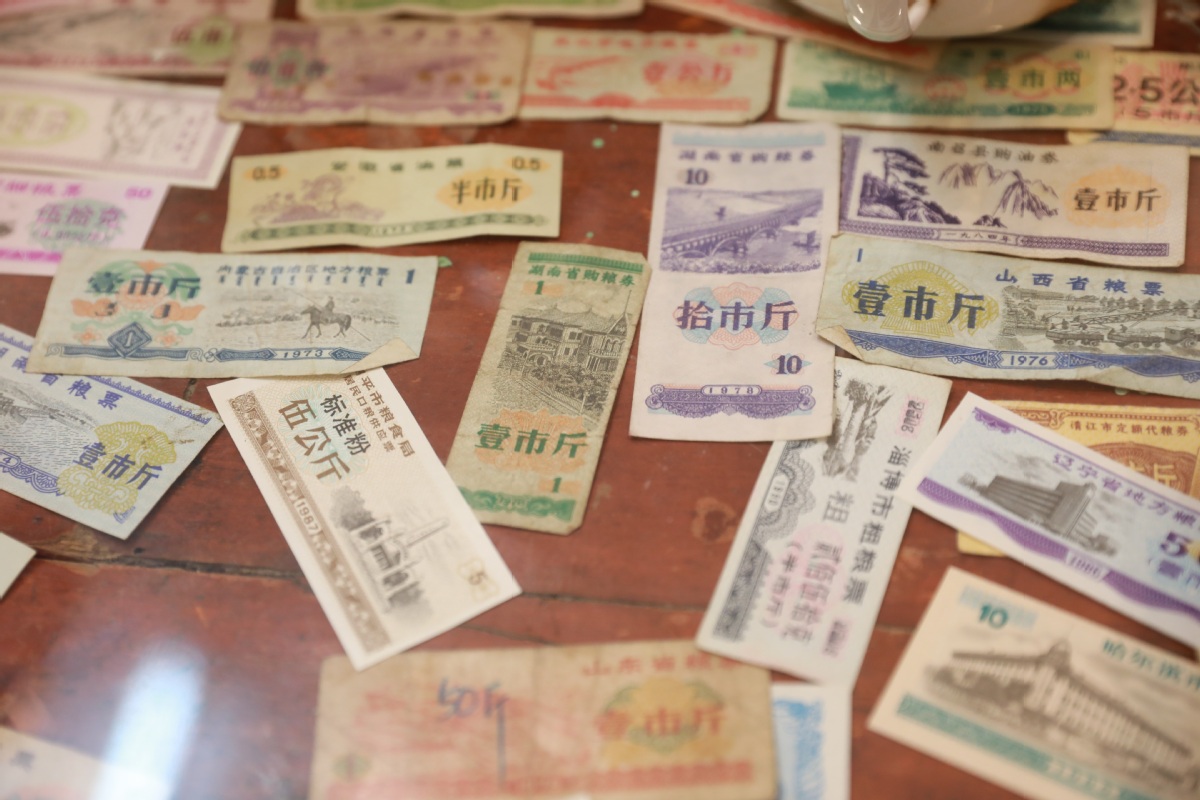
Today, my son only sees "food stamps" and farming tools in museums. How did China go from not having enough to eat to having the finest food?
First, why was it that Chinese peasants who worked so hard - from dawn to dusk, still didn't have enough to eat after 30 years' of the founding of the PRC? It was because the peasants sold their hard-earned agricultural products very cheaply to the country, as the land was owned by the state and the peasants still had to pay agricultural taxes for farming, which was not abolished until 2006.
So China got its first bucket of money for industrialization. This is different from Western countries providing plundered wealth from overseas for industrialization. After the reform and opening-up, my hometown, Ruichang county, Jiangxi province, accumulated funds for industrialization and urban construction through land finance, and in just two decades, it has changed so much and has been transformed.
Second, political party creates the state, and the state creates the market, the market creates society, and society creates civilization.
When the Cultural Revolution was over, my family moved to the town and was compensated with a 14-inch color TV. Though this became the envy of our neighbors, we still could barely make ends meet. When I was admitted to university, I came to Shanghai from the countryside, I still did not have enough to eat, and I always felt inferior. I did not dare to talk to the female students in my class, and the only thing I asked for was food stamps in exchange for a little bit of labor by bringing them boiled water.

Mutual relief and patriotism are the cultural underpinnings of Chinese-style modernization. When the Communist Party of China was founded in 1921 and the PRC in 1949, the country accumulated wealth through the industrial-agricultural scissors, and after the reform and opening-up through land leasing and investment promotion, it obtained further funds for industrial reproduction and created markets through infrastructure development.
When the market was formed, the spirit of contract was established and the rule of law followed, China moved from a society of kinship to a society of law, rejuvenating Chinese civilization.
Third, China is on the path of independent development, upholding fundamental principles and breaking new ground.
For a long time, it has been considered impossible and even frightening for China, which accounts for nearly one-fifth of the world's population, to modernize, which is the subtext of the "China threat theory" popular in developed countries.
Twenty years ago, the international community questioned "who will feed China", and on April 15, 2010, the then-US president Barack Obama said in an interview with the Australian Broadcasting Corporation that "if more than a billion Chinese people lived the way Australians and Americans do now, then all of us would be in a very tragic situation, because that's something this planet can't afford". China is not only modernizing, but in the process recreating modernity and giving it a new civilization meaning.
China is about the same size as the United States but has half the arable land and four times the population, not to mention the Heihe-Tengchong Line that divides China into two parts with contrasting population densities.
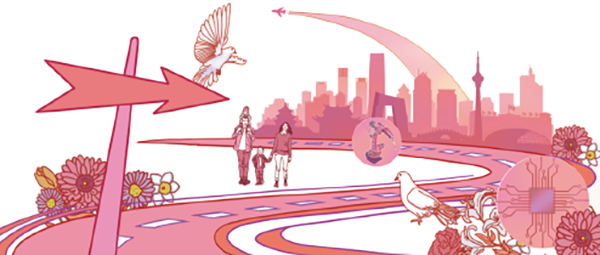
The southeastern half of the country accounts for 43.41 percent of China's land area and 93.68 percent of the total population. On the contrary, the northwest is short of water, and the land is vast and sparsely populated.
How to achieve modernization? We must give full play to the national system, establish a national interconnected transportation network, and provide counterpart support. Among them, state-owned enterprises play an important role in realizing the transmission of electricity from the west to the east, and the calculation of the east and the west, so as to achieve poverty alleviation and common prosperity.
Chinese modernization is the modernization of a huge population, of common prosperity for all, of material and cultural-ethical advancement, of harmony between humanity and nature and of peaceful development. These contents have gradually surpassed western experience as well as other developing countries.
In terms of orders of magnitude, Chinese-style modernization is "the modernization with a huge population." Just like my grandma gave birth to nine daughters and my mother gave birth to five children, it is difficult to be adequately fed, let alone modernization? China's population of more than 1.4 billion will enter a modern society as a whole, and its scale will exceed the sum of the existing developed countries, which will completely rewrite the modernized world map.
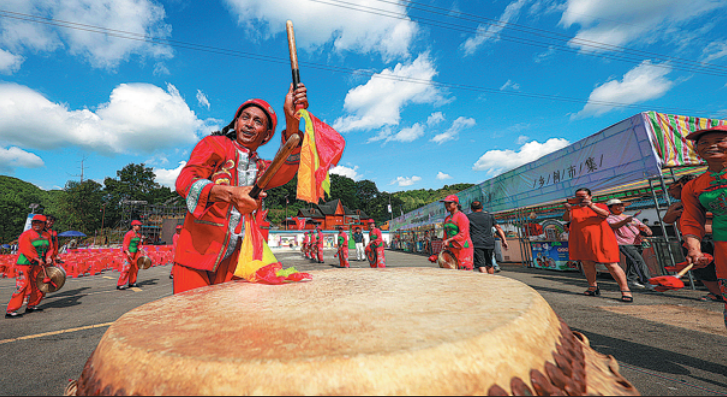
From the perspective of people-to-people relations, Chinese-style modernization is "the modernization of common prosperity for all." Take my family as an example, my sister had to raise pigs and farm land for me to go to college, but after I worked, I supported her son to go to college, so as to achieve common prosperity and common improvement across generations.
In China, nineteen provinces have provided assistance to Xinjiang, and the eastern and western provinces have paired up to help alleviate poverty in their provinces, reflecting the spirit of the great unity of the Chinese people. Seventy percent of Gansu's fiscal revenue is provided by the central government, while 70 percent of Shanghai's fiscal revenue is transferred to the central government. This is how a strong government is deploying the market to promote common prosperity.
From the perspective of the people's relationship, Chinese-style modernization is "the modernization of material and cultural-ethical advancement". To be a scholar is to be the top of society -- my parents have taught me this way since I was a child. I have established a lofty ideal of benefiting the toilers of the world since I was a child. My family is modernized, not only materially wealthy, but also spiritually wealthy. It is a happy family.
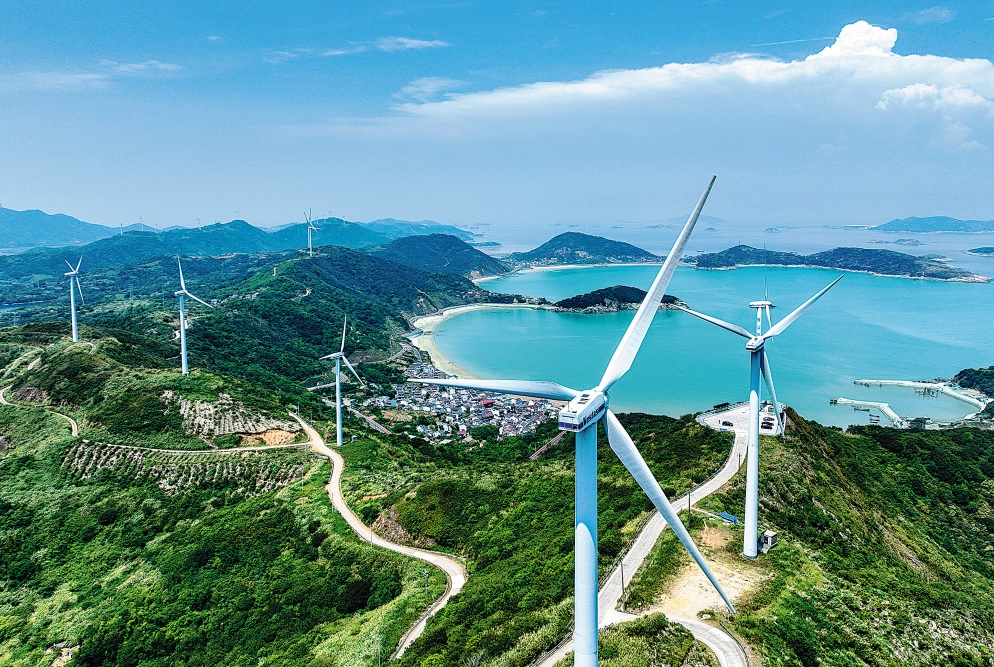
From the perspective of the relationship between human and nature, Chinese-style modernization is "the modernization of harmony between human and nature". Since ancient times, Chinese has believed in the "unity of human and nature", and today it has been transformed into the concept of "lucid waters and lush mountains are invaluable assets". The "dual carbon goals" are absent in the history of western modernization. Now in China, on the mountain where the wood was chopped when I was a child, the wind blades are erected, and now the children no longer need to chop wood for cooking but using gas.
When I was a child, many families fed me. I have experienced the warmth of the big family of the Chinese nation. We help each other and overcome difficulties together. Chinese people take a holistic view of the relations between China and the world. Take food security as an example. Chinese people know that if they buy too much food from the international market, global food prices will jump, leaving many people in poor countries to go hungry.
In terms of county-to-country relations, Chinese-style modernization is "the modernization of peaceful development". Adhering to the concept of "harmony is the most valuable", in the era of starvation, we were by no means stealing, but eating from other families, helping each other and overcoming difficulties together. Relying on the mountains and the water, and tapping on local materials, is the production method of agricultural civilization, which determines its peaceful nature.
Of course, these five characteristics are not only based on national conditions, but also achieved by the Chinese people under the leadership of the Communist Party of China. They have been also tested by practice. The leadership of the Communist Party of China is the most essential characteristic and greatest advantage of socialism with Chinese characteristics.
The original aspiration and the mission of the CPC is to seek happiness for the Chinese people. The Party will not allow the market to expand disorderly. China's economy is based on strong State-owned enterprises. For example, Sichuan is rich in water resources, so Chinese State-owned enterprises built hydropower stations in Sichuan, and power is transmitted to Shanghai. The central government then supports Sichuan through other ways.
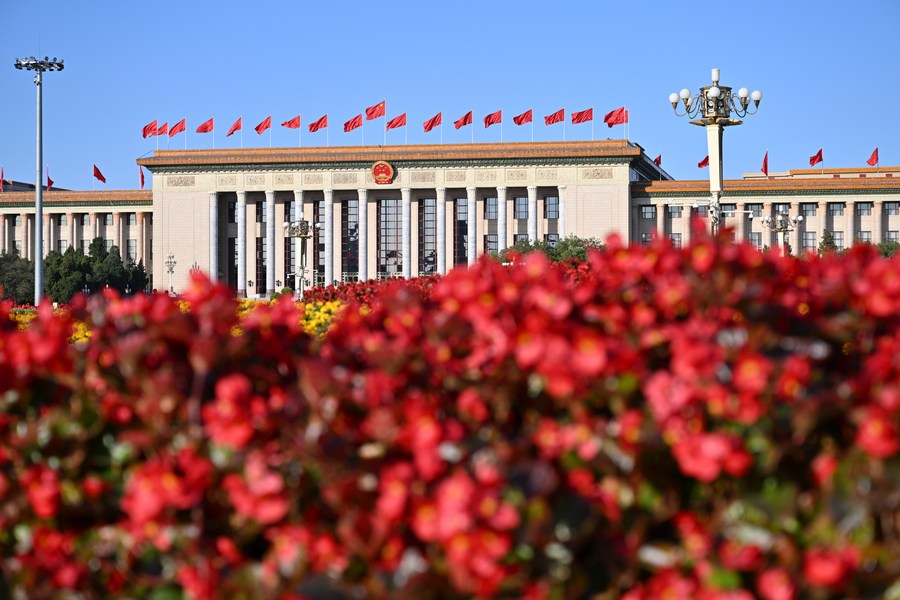
In the report he delivered to the 20th National Congress of the Communist Party of China, Xi Jinping, general secretary of the CPC Central Committee, said that the essential requirements of Chinese modernization are as follows: upholding the leadership of the Communist Party of China and socialism with Chinese characteristics, pursuing high-quality development, developing whole-process people's democracy, enriching the people's cultural lives, achieving common prosperity for all, promoting harmony between humanity and nature, building a human community with a shared future, and creating a new form of human advancement.
To build China into a great modern socialist country in all respects to advance the rejuvenation of the Chinese nation on all fronts through a Chinese path to modernization, to build a shared future of mankind though the Belt and Road Initiative, is the strongest message to China and the world from the 20th National Congress of the Communist Party of China.
In today's world, Europe goes right, Latin America goes left and China goes forward. Probably only China is able to look both from yesterday and the day after tomorrow to look into tomorrow, that is to look into the new era when the country realized its centenary goal from the 500 years' socialist history and to look into 2050 when China is already a modern socialist country in all respects from 2035.
This is a blessing for China and a blessing for the world.
The author is vice president of Academy of Xi Jinping Thought on Socialism with Chinese Characteristics for a New Era, Renmin University of China, and Jean Monnet Chair Professor.
If you have a specific expertise, or would like to share your thought about our stories, then send us your writings at opinion@chinadaily.com.cn, and comment@chinadaily.com.cn.
















